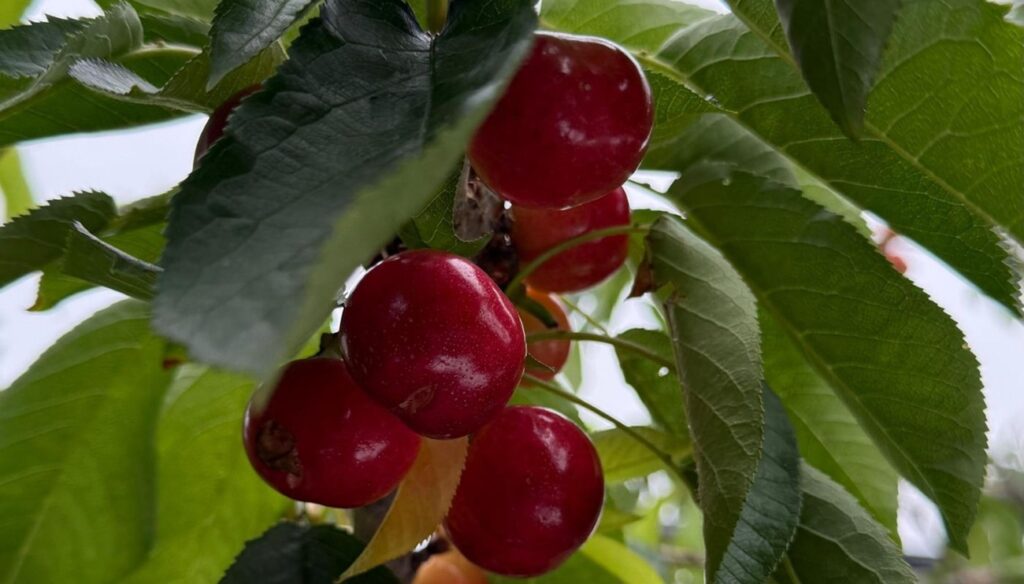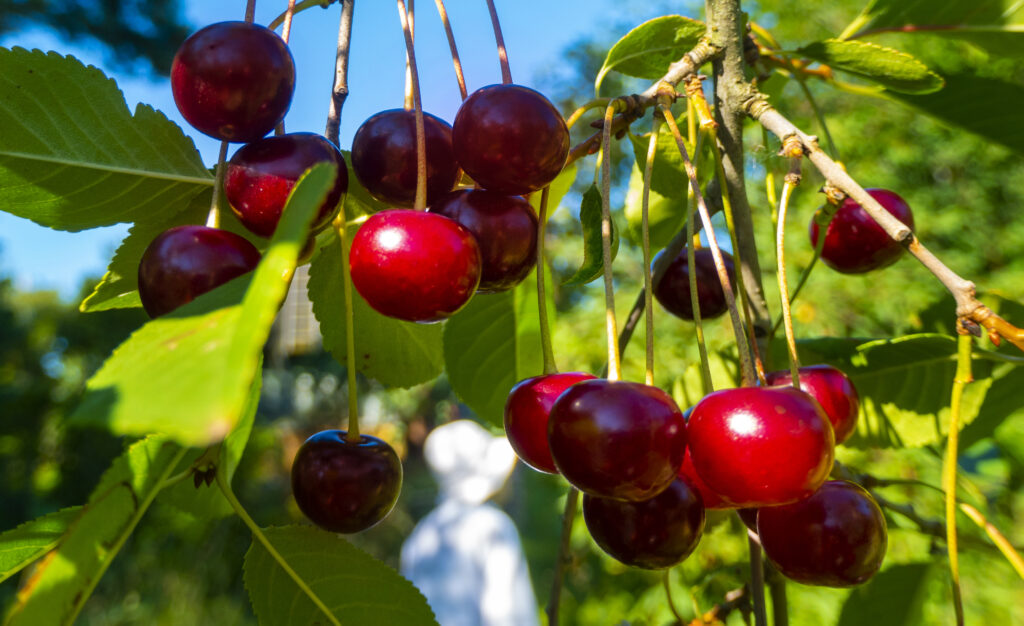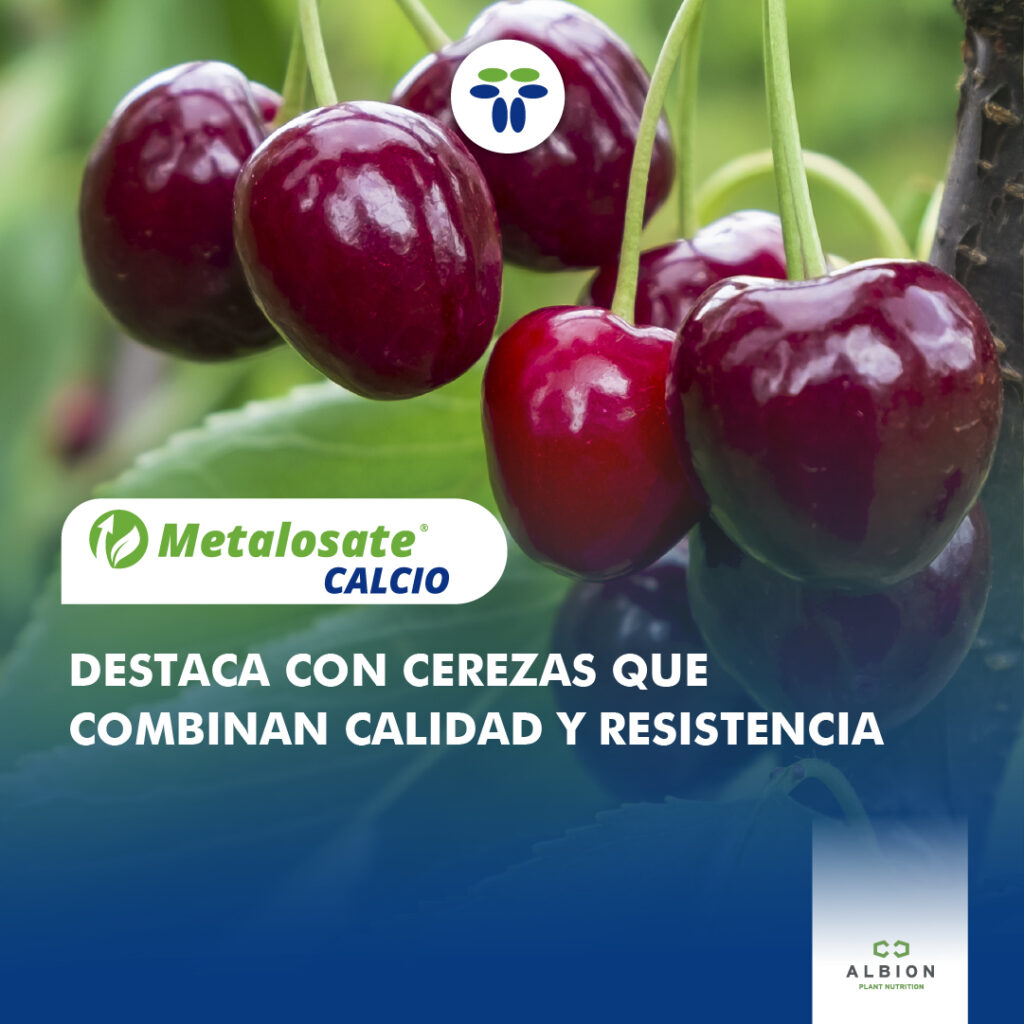Climate change and the El Niño phenomenon, which began in June this year and will end in the fall of 2024, have created a complex scenario for agriculture and in particular for cherry producers. In this context, we have prepared a comprehensive special in which we will address the problem, the situation in the orchards and, finally, the possible solutions to a phenomenon that is here to stay.
Climate change is nothing new; for several years now, there has been talk about the effect of gas emissions and their direct relationship with the increase in the planet's temperature. The main consequences of this phenomenon range from increased rainfall, extreme weather events, changes in the seasons of the year and the melting of freshwater reserves, essential for human life.
Agriculture is one of the many activities that have been affected by climate change, according to the report “Climate Change: The Impact on Agriculture and the Costs of Adaptation,” prepared by the International Food Policy Research Institute, IFPRI.
“Rising temperatures ultimately reduce the production of desired crops, while causing the proliferation of weeds and pests. Changes in rainfall patterns increase the likelihood of crop failure in the short term and reduced production in the long term. Although some crops in certain regions of the world may benefit, overall the impacts of climate change are expected to be negative for agriculture, threatening global food security.” records the document.
According to the United Nations Framework Convention on Climate Change (UNFCCC), climate change is understood as “a change in climate attributed directly or indirectly to human activity that alters the composition of the atmosphere and that is in addition to natural climate variability observed over comparable time periods.”
According to INIA Bulletin No. 463, “Climate Change and its Effects on Agriculture,” by 2030 the Earth’s temperature will increase by 1.5°C compared to pre-industrial levels. This is due to global warming, that is, the sustained increase in the average temperature of the atmosphere and oceans in recent decades, attributed to human activities and, therefore, to the generation of gases.
In practice, all of the above is happening; maximum temperatures have broken historical records, as well as other extreme or unusual weather events for certain seasons; just go back to May of this year in Emilia-Romagna, Italy, where intense spring rains and hail caused serious damage to cherries, peaches, pears, kiwis and other crops.
“After the rains we have had sunny and clear days, but the cherries that were damaged by the rains were unfortunately lost; one of the varieties is the Bigarreau and also the Early Lory and Sweetheart. Now we are starting with the harvest of the Bigarreau, which in the earliest area has a red colour; the mid-late varieties are in the growth phase. We are carrying out interventions to prevent rain damage with calcium and magnesium, to improve size and colour level,” Cataldo Lobascio told Smartcherry at the time.
Episodes like this were repeated in Spain, where rains caused the loss of 80% of the cherry production in the Jerte Valley. In the face of such agricultural catastrophes, it is worth asking whether climate change will become more and more extreme in terms of its effects on agriculture, or whether what happened in Europe during the spring could be repeated in Chile and, of course, whether the planet's agro-food security could be at risk.
Extreme weather events
Just as droughts (two consecutive years of annual rainfall less than the 20th percentile of the baseline) have become increasingly severe, with such events projected to occur more than 10 times in 30 years by the end of the 21st century, the occurrence of intense rainfall events accompanied by high temperatures, with isotherms at a fairly high altitude, also tends to increase. The latter predicts discouraging prospects,
Considering that the increase in the height of the zero isotherm quickly causes rivers to rise, which can cause serious flooding, avalanches, landslides, etc. In addition to being risky events for people, these phenomena affect agriculture, whether due to damage to irrigation systems, chemical and organoleptic alteration of water due to the dragging of material, damage to orchards, phytosanitary diseases, etc.

“El Niño” and its effects

For several years, the media has shown different climatic catastrophes that have occurred in different parts of the planet; more extreme tornadoes, decades-long droughts, floods, fires caused by high temperatures, among others. In Chile, these realities seemed far away, although the central zone had, until a few months ago, 14 years of mega drought; however, this 2023 would be marked by the phenomenon of “El Niño”, which early in the year predicted what was to come.
In mid-June, the term “atmospheric river” was heard almost for the first time in our country. Raúl Valenzuela, an academic from the University of O'Higgins and PhD in Atmospheric Sciences, told TVN that an atmospheric river is "a horizontal flow of water vapor concentrated in long filaments, which control precipitation in central Chile."
In 2019, given the repeated presence of this phenomenon in other parts of the planet, an intensity scale was created that involves the duration and magnitude of the water vapor flow: "In both dimensions there is a combination. There are atmospheric rivers that are short-lived, but with a lot of flow, and they can be equivalent - in terms of impact - to rivers that have a lower flow, but last much longer," the specialist clarified.

Between June 21 and 26, the Maule region was affected by a frontal system linked to a warm atmospheric river that generated a 0° C isotherm at 3,000 meters above sea level in the Andes Mountains. From that height, towards the foothills and valleys, the precipitation was liquid, intense and concentrated, causing severe flooding of rivers such as the Mataquito and Maule, which caused flooding of cities and entire sectors and hectares of crops under water.
“These intense, short-term rainfalls do not constitute the so-called “effective rains”, which by definition are slower and more extensive in duration, without causing serious damage to agriculture. On the other hand, when they are intense, in a short time, they only produce damage to urban areas, roads and rural areas. According to climate change models, this could be the beginning of frontal systems, associated with tropical atmospheric rivers, that could be more recurrent in the coming winters. If there were two this year, it is likely that there will be three in the coming winters. It is one of the threats to which regional agriculture must adapt to reduce its vulnerability,” said Patricio González, Agroclimatologist from the University of Talca.
Following this event, the authorities declared an agricultural emergency in the central and southern areas of the country. In mid-August (18 to 22), the same scenario was repeated; a new atmospheric river affected the central area of Chile, with the first three days of precipitation associated with atmospheric rivers. These left amounts of 51.0, 20.6 and 110.0 millimeters respectively. In the case of Licantén, on August 21, 139.5 millimeters of rain fell in 24 hours.
The consequences were dramatic. The intense rainfall in the central-southern part of the country caused damages exceeding $900,000,000 in the agricultural sector. Nearly 274,000 hectares were flooded, which were added to the 120,000 affected by the climatic event in June.
An estimated 440 irrigation systems were affected, with the Maule region being the most affected, with damages of around 427 billion pesos; the O'Higgins region, for its part, reported damages of $198 billion.
What is expected for September?
The ninth month of the year started with a new atmospheric river, this time of category 1-2 on a scale of 1 to 5. Although there were no serious floods in orchards, as during previous episodes, the excess rain has generated saturated soils and has put into question the start of the irrigation season for species such as cherries, either because the irrigation equipment was seriously damaged during the previous floods or because of the excess rainfall. In turn, tasks such as fertigation and foliar fertilization must be analyzed in detail and carefully considered what to do in each case.
Regarding the agroclimatic projections for this month, the agroclimatologist from the University of Talca, Patricio González, pointed out that according to probabilistic models, both statistical and dynamic, it is estimated that September will continue to present precipitation, since it will be marked by the "El Niño" event, which began in June 2023 and will end in the fall of 2024. In addition, there will be episodes of frost, which could affect orchards in early phenological states.
“For the month of September, which is still winter until the 22nd, the greatest recommendations are due to the occurrence of late rains followed by probable frosts. For this reason, it is necessary to pay attention to the meteorological evolution. September is a month of transition from winter to spring, which is why it tends to behave in a very anomalous way; even more so with the current presence of the warm event El Niño (associated with rains with heat and hail in spring). Do not be careless in a year that has been extremely complex for agriculture,” the specialist warned.
The current cherry season will undoubtedly present a series of complexities associated with climate change and extreme phenomena that, according to specialists, will become more frequent every day.
«The issue of rain, in particular within the changes this year, is rain that those of us who are over 30 years old were more accustomed to, but the truth is that we were not used to it with cherry trees, but we did know that plum trees, apple trees could withstand it, but with cherry trees we are going to learn this this year, we are going to know what really happens. We knew that peach trees, for example, did not tolerate it, rootstocks that were more sensitive were greatly affected by these issues, so I think something similar is going to happen to us with cherry trees, we are going to have rootstocks that will withstand it, others that will not withstand it and there will be problems at the end of winter.", said Jordi Casas, Advisor and consultant for deciduous fruit trees.
What is currently happening in cherry orchards due to winter flooding? What special management will be required in these episodes of climate change? How to deal with an unstable spring? These are questions that the main cherry production advisors will answer in an upcoming article in our special “climate change”.










